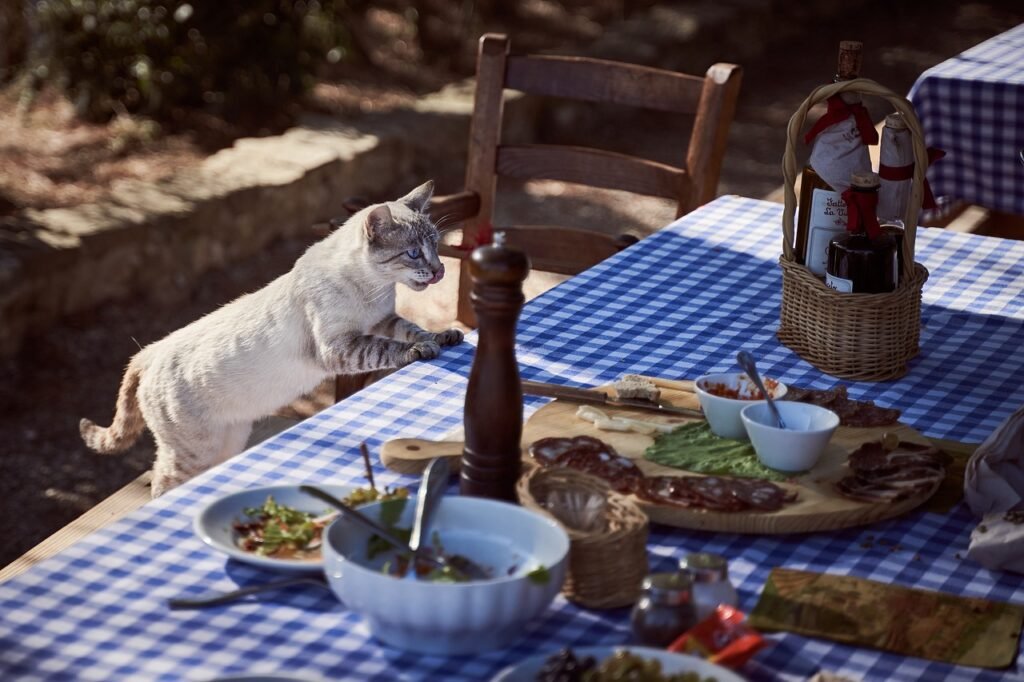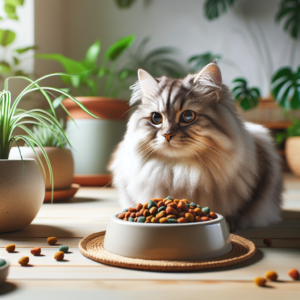
Caring for a cat involves more than just providing a loving home; it also requires attention to their health and nutrition. While commercial cat foods are convenient, many pet owners are opting for homemade options to ensure their feline friends are consuming wholesome, natural ingredients. Crafting homemade cat food allows you to control the quality of ingredients, avoid preservatives, and cater to specific dietary needs. In this article, we unveil some of the top homemade cat food recipes, offering a nourishing and tasty alternative for your beloved pet.
Understanding Cat Nutrition
Before diving into recipes, it’s crucial to understand the nutritional needs of cats. Cats are obligate carnivores, meaning their diet must primarily consist of meat. Essential nutrients include:
– **Protein**: Vital for growth and energy, derived mainly from animal sources.
– **Taurine**: An amino acid crucial for heart and eye health, found in meat.
– **Fatty Acids**: Important for skin and coat health, sourced from animal fats.
– **Vitamins and Minerals**: Necessary for overall well-being, including Vitamin A, Vitamin D, calcium, and phosphorus.
It’s important to balance these nutrients to avoid deficiencies or excesses that could harm your cat’s health.
The Benefits of Homemade Cat Food
Homemade cat food provides several benefits:
– **Quality Control**: You choose fresh, high-quality ingredients.
– **Customization**: Tailor recipes to meet specific health needs, such as allergies or weight management.
– **Transparency**: Know exactly what your cat is consuming, free from additives and fillers.
However, transitioning to homemade food requires careful planning to ensure all nutritional needs are met. Consulting with a veterinarian or a pet nutritionist can be invaluable.
Top Homemade Cat Food Recipes Unveiled
Chicken and Rice Delight
This simple yet nutritious recipe combines protein-rich chicken with easily digestible rice.
**Ingredients:**
– 1 cup of cooked chicken breast, shredded
– 1/4 cup of cooked brown rice
– 1/8 cup of chicken broth (no salt added)
– 1 teaspoon of fish oil (optional for added omega-3)
**Instructions:**
1. In a bowl, mix the shredded chicken with the cooked brown rice.
2. Add chicken broth gradually to achieve desired consistency.
3. Stir in fish oil if using, and serve at room temperature.
4. Store leftovers in an airtight container in the refrigerator for up to three days.
Turkey and Vegetable Medley
This recipe introduces vegetables to your cat’s diet alongside lean turkey.
**Ingredients:**
– 1 cup of ground turkey
– 1/4 cup of pureed carrots
– 1/4 cup of pureed peas
– 1 tablespoon of olive oil
**Instructions:**
1. Cook the ground turkey in a skillet over medium heat until fully cooked.
2. Mix in the pureed carrots and peas.
3. Drizzle olive oil over the mixture and combine thoroughly.
4. Allow to cool before serving.
5. Store leftovers in the refrigerator for up to three days.
Salmon and Quinoa Feast
This meal is rich in omega-3 fatty acids and high-quality protein.
**Ingredients:**
– 1 cup of cooked salmon, flaked
– 1/4 cup of cooked quinoa
– 1 tablespoon of chopped parsley
– 1 teaspoon of sunflower oil
**Instructions:**
1. Combine the flaked salmon with cooked quinoa in a bowl.
2. Add chopped parsley for flavor and vitamins.
3. Drizzle sunflower oil and mix well.
4. Serve at room temperature and refrigerate any leftovers.
Beef and Sweet Potato Stew
A hearty meal that offers a good balance of protein and carbohydrates.
**Ingredients:**
– 1 cup of ground beef
– 1/2 cup of cooked sweet potatoes, mashed
– 1/4 cup of beef broth (no salt added)
– 1 teaspoon of flaxseed oil
**Instructions:**
1. Brown the ground beef in a pan, ensuring it’s fully cooked.
2. Mix in the mashed sweet potatoes and beef broth.
3. Stir in flaxseed oil for added nutrients.
4. Allow to cool and serve, storing leftovers in the fridge.
Transitioning Your Cat to Homemade Food
Switching from commercial food to homemade requires a gradual transition to prevent digestive upset. Start by mixing a small amount of homemade food with your cat’s current diet, gradually increasing the proportion over a week or two. Monitor your cat’s health and stool during this period to ensure they are adjusting well.
Common Mistakes to Avoid
When preparing homemade cat food, avoid these common pitfalls:
– **Unbalanced Diets**: Ensure recipes provide all necessary nutrients; consult a vet if unsure.
– **Using Harmful Ingredients**: Avoid onions, garlic, and chocolate, which are toxic to cats.
– **Improper Storage**: Store food correctly to prevent spoilage and bacterial growth.
Conclusion
Creating homemade cat food can be a rewarding way to ensure your feline friend enjoys a nutritious, balanced diet. By carefully selecting ingredients and following reliable recipes, you can cater to your cat’s specific dietary needs while avoiding unnecessary additives found in some commercial products. Always consult with a veterinarian to tailor recipes to your cat’s health requirements and enjoy the peace of mind that comes with knowing exactly what your pet is consuming.
Additional Resources
For further guidance on homemade cat food, consider the following resources:
– **Veterinary Consultation**: Always a priority to determine your cat’s specific needs.
– **Pet Nutrition Books**: Offer comprehensive advice on balanced feline diets.
– **Online Forums and Communities**: Connect with other pet owners for recipe ideas and support.
Crafting homemade meals for your cat can deepen your bond while promoting a healthier lifestyle. By tapping into the recipes and guidance provided, you’re well on your way to offering your cat a delicious and nutritious diet tailored just for them.
“`
#ChatGPT assisted in the creation of this article.







